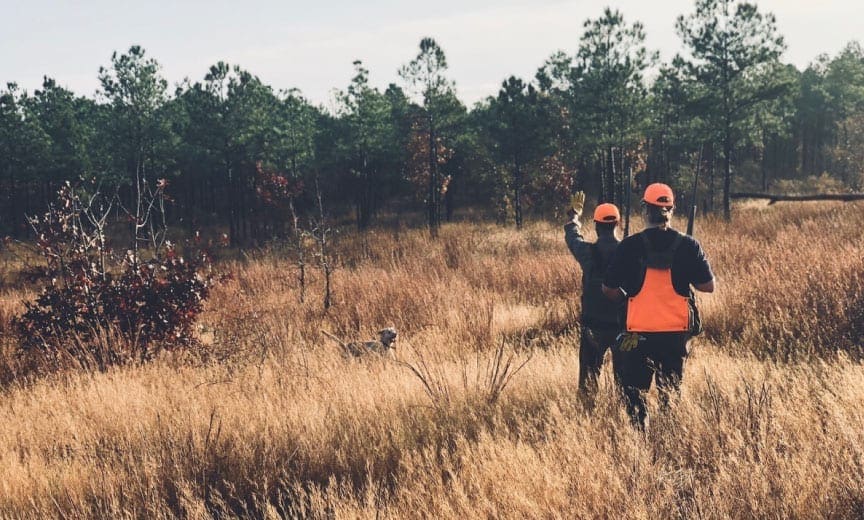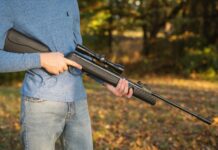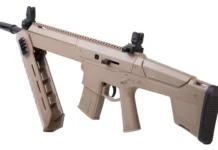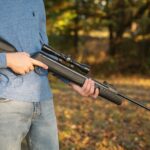Table of Contents
Take a look at selecting shot size and choke size for bobwhite quail hunting
Nowadays, I use a 20-gauge, over-under Beretta 686 Silver Pigeon choked in skeet and modified, respectively. When I walk out into the uplands with a 30-inch barrel, I have a bad habit of slinging my gun over my shoulder a little too confidently. Why? Because the gun is a nice piece and I can trust that my No. 6 shot Kent Cartridge loads will consistently drop the explosive, bobwhite quail.
And, if you really want to be picky about it, I prefer to shoot my game birds with steel shot. I personally just don’t want lead in my meat, but that part is up to you.
If you think about the flight and escape habits of quail in their natural habitat, often they will sit tight in cover and hold for a pointing dog—assuming you have a pointing breed. Outside of that, if you’re anything like me, you’ve got a flushing retriever and you keep your actions closed and barrels loaded. There’s no time for tea, but I digress. Quail will flush fairly close and will often provide a reasonable shot if you take a little time to breathe before the shot.
What shot size is best for bobwhite quail?
If Prince Bob gives the pup a half-a-time-a-day, you should have within a 20 to 40 yard shot on a flushing bird. If you want more options, you’ve got the choice of No. 8 as well. I often skip over No. 7 1/2 simply because every time I shoot them birds never seem to fall dead on. My dog tends to do a little more work with the No. 7 1/2 shot as birds—yes, little 6-ounce bobwhites—seem to run off.
I think there may be some kind of jinx with me and No. 7 1/2, but, regardless, I do not recommend them for quail. Blame it on my Southern superstition if it pleases you, but regardless, you won’t catch me shooting them anymore.

What gauge is best for bobwhite quail?
It is my thought that if you’re reading this you have some kind of appreciation for the finer things in life. Why? Because you are chasing Mr. Bob. You’ve got some kind of fine shooting dog who’s working the heavy cover, thorns, and thickets that house and host our quarry. In addition to that pretty dog, you also likely have a nice-looking over-under Beretta like mine or your Grandaddy’s Winchester Model 12 pump gun.
At a time, Grandaddy was a quail specialist and now you’re in his footsteps. Either way, bobwhite quail hunting requires a bit of class and nostalgia, so shoot a gun that means something to you. The bird demands that much respect; the dog demands that much respect. Further, the habitat and landscape demand that footsteps be left by dog and man, birds are successfully retrieved in full, and memories are made along the way.
Wild Game Recipes: Spicy Brandy Cranberry Glazed Quail
I’ve shot quail with 12- through 28-gauge shotguns and even attempted with a 98-year-old .410. That didn’t last long due to more wasted gun power than shot birds. My choice gauges for wild bobwhite quail are primarily 20-gauges and secondarily, the classic 16-gauge side-by-side. Ammunition for 20-gauge shotguns is typically more readily available, especially in a pinch, though I would highly recommend soft-shooting 16-gauge RST shells if you prefer to run that gauge. For an older shotgun especially, the RST shells are a much lighter shooting load than most others and will put a little less wear and tear on Grandaddy’s old gun.
Concluding thoughts about hunting bobwhite quail
For sake of length, I will conclude because I’ve got a knack for talking shotguns to great length.
Obviously, if you have not noticed, I am a bit biased towards No. 6 loads because they are a size that’s been proven time and again. In the world of consumerism, many manufacturers are constantly producing loads for one reason or another. To this day I still do not understand the need for 3 1/2-inch loads and one definitely does not need them for a 6-ounce bird—2 3/4 inch shells will suffice. Further, quail are fairly fragile birds, so shooting No. 6 or No. 8 shot has been proven effective.

Much of a man’s quail shooting ineptitude comes not from selecting the wrong shot size, but from the hunter’s irreverence to the ethics of hunting. Ethical hunting is inclusive of finding and retrieving downed game, with or without a dog.
For many like myself, hunting with a dog is essential for not just the experience of following a dog through the woods, but also to increase my chances of finding downed game. Shooting No. 6 for me has additionally made retrieving shot birds significantly easier as seldom do I find crippled birds or runners.
Configuring your shot size, pattern, choke and barrel length as well as studying the habits of the birds themselves all come together to make a complete and successful hunting experience. Hunting ethically is understanding all aspects of your shotgun including the best shot size and gauge, and with respect to Bob, I would rather chase game birds in a dignified and ethical manner. That means shooting No. 6 shot (preferably steel) through any gauge, .410 through 12, choosing a skeet and/or modified choke configuration, as well as bringing along an enthusiastic pup that will find and retrieve your game.
How Public Land Bobwhite Quail Shift Patterns
Understanding Bobwhite Quail Behavior
Plantation Quail – A Southern Bobwhite Film
How Native Prairies Can Help Save Bobwhite Quail











































